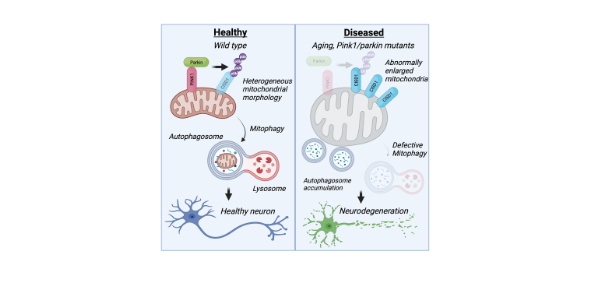
Submitted by Penny Peck on Tue, 20/02/2024 - 13:30
Mitochondrial dysfunction is a key pathogenic driver of neurodegenerative diseases such as Parkinson’s disease (PD). Extensive research has established that the PD-linked genes, PINK1 and Parkin, are important factors mediating the degradation of dysfunctional mitochondria via mitophagy. Hence, there is intense interest in identifying mitophagy-inducing factors as potential therapeutic strategy.
In a study led by Dr Alex Whitworth (MRC Mitochondrial Biology Unit) and recently published in Molecular Neurodegeneration, Martinez et al identify the iron-sulphur cluster containing protein CISD1, which resides on the outer mitochondrial surface, as a critical ubiquitination target of Parkin that regulates mitophagy. The group used a combination of human cell culture and Drosophila in vivo models to show that CISD1 naturally accumulates during aging and in the PINK1/parkin-mutant PD models, causing mitochondrial defects that impair mitophagy and autophagy. They go on to show that genetic or pharmacological inhibition of CISD1 substantially activates mitophagy which is sufficient to alleviate the neurodegenerative phenotypes in the PD models.
As CISD proteins are known to be targeted by the glitazone anti-diabetic drugs, it is intriguing to note that epidemiological studies have linked diabetes with an increased risk of PD, and some studies suggest diabetic patients treated with glitazones have a reduced risk of developing PD. Thus, this study presents CISD1 as an FDA-approved druggable target for PD which mechanistically links to promoting mitochondrial function via mitophagy activation.
Reference
Martinez A, Sanchez-Martinez A, Pickering JT, Twyning MJ, Terriente-Felix A, Chen PL, Chen CH, Whitworth AJ.
Mol Neurodegener. 2024 Jan 25;19(1):12. doi: 10.1186/s13024-024-00701-3. PMID: 38273330

